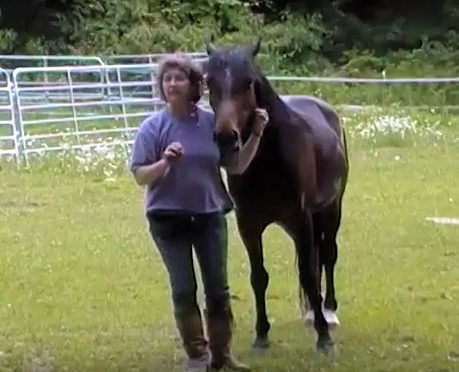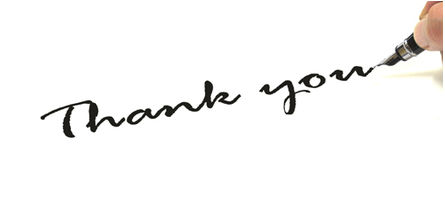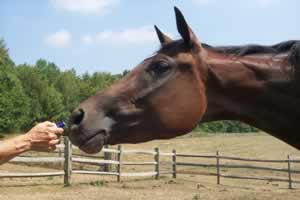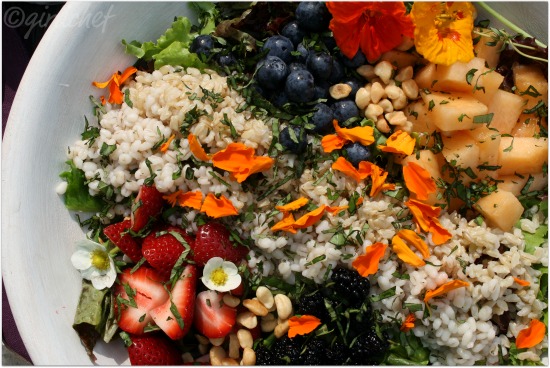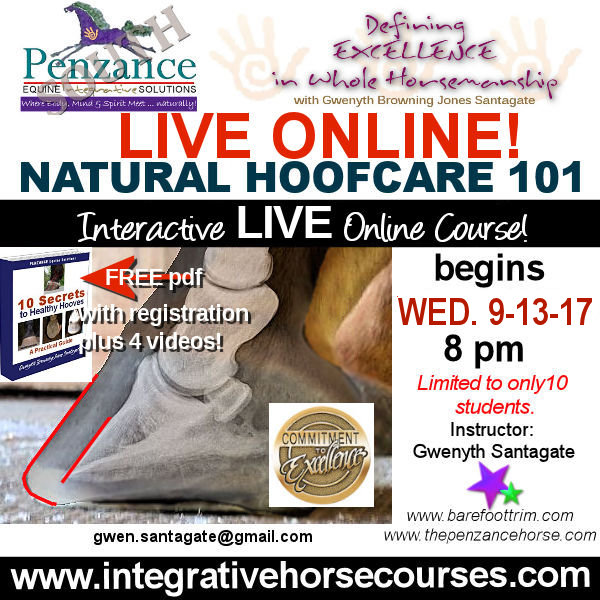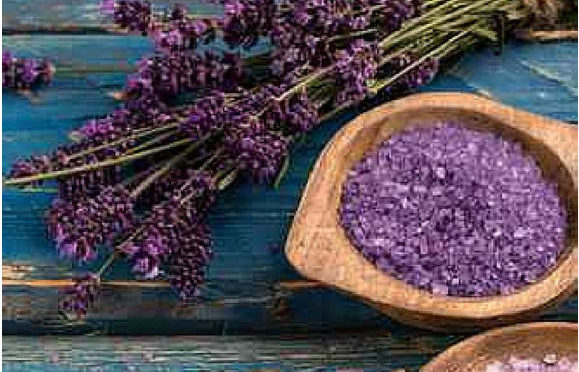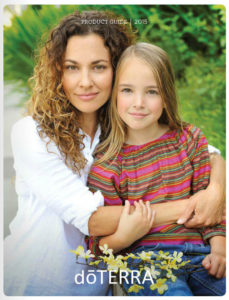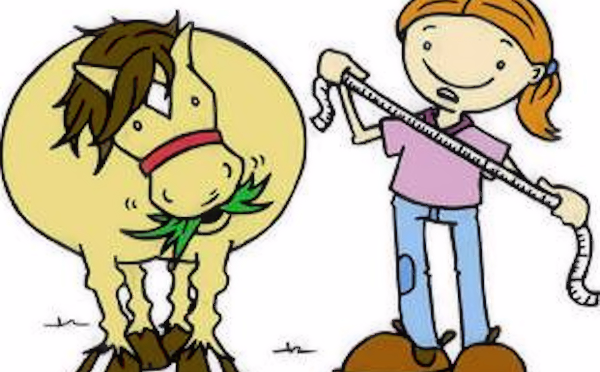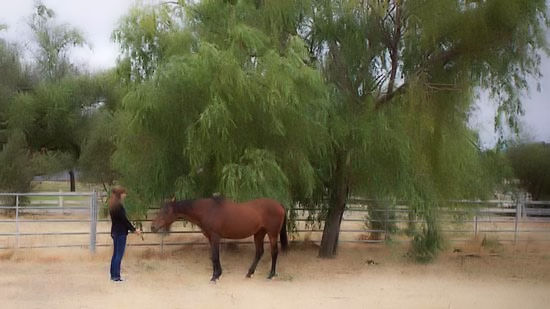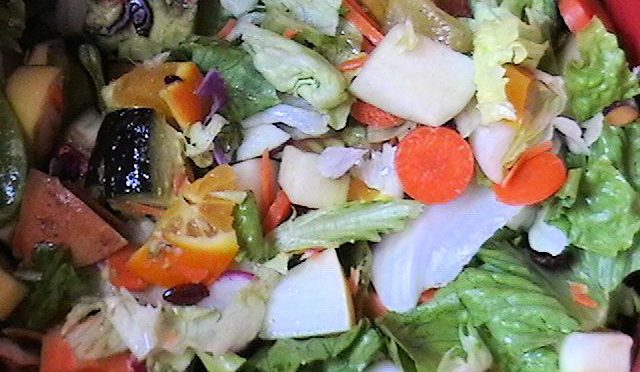Meditating with Your Horse for Healing
Natural Horse Magazine, April, May June 2013
Photo © Lexie Cataldo
Feelings come and go like clouds in a windy sky. Conscious breathing is my anchor.
This quote by Thich Nhat Hanh is a great reminder of the power of meditation, especially when I am with my horse and he is not feeling well. It sounds so simple, and yet in the midst of a health crisis it’s not always so easy to remember to breathe. Recently my older, retired Quarter horse, Shawnee, had fallen and was standing on three legs when I arrived, groaning with each shift of his weight. As I waited for the vet to arrive, I knew that worrying and fretting would not help either of us. I stood with him, breathed and practiced the earth and sky meditation (see below) for about an hour. By the end of the meditation, he was putting weight on the leg, his eyes looked much brighter, and he began to graze and look for treats in my pockets—he was feeling much better! After an exam, my vet determined we should just wait and see, and so I have been spending time in quiet meditation and stillness with him every day as he recovers. I can feel this time between us helping both of us—he always seems to walk a bit easier afterwards and I am feeling much less worried about him. Isn’t it amazing that just a simple meditation can have such profound healing effects? How can this be?
Sharing a Healing Space
I think the simplest answer is that we are all, in essence, made up of energy. And when we tap into this deeper energetic space there can be a shifting and moving back into balance. Meditation creates a peaceful space that can support a reharmonizing and rebalancing on all levels of being—not only our own, but also any being that chooses to share in this space with us.
John Novak says in his book, Lessons in Meditation, “In meditation, effort must be applied in a direction opposite to what we are used to. Our “effort” must be to relax ever more deeply. We must ultimately release the tension from both our muscles and our thoughts. When we relax so deeply that we are able to internalize the energy of the senses, the mind becomes focused and a tremendous flow of energy is awakened. … Meditation is a continuous process, and can be said to have three stages: relaxation, interiorization, and expansion.”
When we meditate, first we relax, then we internalize and stabilize this quiet inner space, and then, slowly, this space expands outwards to help those around us. It’s so gentle, but also so powerful. By practicing some simple meditative techniques with your horse, you can begin to see healing results almost immediately!
Exercise to Get Relaxed, Open to the Flow, and Expand:
The Earth and Sky Meditation
Explanation–The Power of Earth and Sky
In Japanese symbolism, earth and sky represent the two opposite aspects of the greater energetic whole that make up the universe, and the more that we can connect to earth and sky within ourselves, the more we can remember our inner nature of energetic connection and oneness with all things. In many spiritual traditions, the heart is considered the seat of the soul, the center of one’s being, where the earth and sky energies come together. It is in our hearts where our deepest healing can occur. The heart is also associated with love, and when we come from a place of love and compassion, we can more easily support our horses to heal.
Tips: Practice this exercise while standing several feet from your horse, arms at your sides, eyes open with a soft gaze downward about 3 feet in front of you. Allow your horse to move freely as he or she wishes. Allow 30-60 minutes of time.
Directions:
Take a deep breath. Let it out slowly. Take another deep breath. Let it out slowly. Imagine that all of your stresses from the day can release from you with each exhale. Breathe in. Exhale slowly. Allow yourself to let go of all your concerns and just be aware of your breath.
Imagine there are roots coming down from the base of your spine. These roots stretch far down into the earth, grounding you. Feel yourself stable, grounded, part of the earth, just as if you were a beautiful tree. Imagine that the grounding energy of the earth can flow up these roots into your heart center, giving you stability and peace. For several minutes, breathe deeply as earth energy flows within your being. Feel peace and calm coming upward from the earth and flowing within your whole body, each breath anchoring you more strongly and deeply into earth’s power and stability.
Now imagine that the expansive, creative energy of the sky is flowing down into your crown chakra. It is a beautiful shower of light and healing, which brings with it spiritual and intuitive wisdom, and all things good and positive. It flows from your crown at the top of your head, into your heart. Bringing this bright spiritual energy into your heart allows it to open and expand. Within your heart is all the highest love, compassion and harmony that exists in the universe. Feel earth and sky energy mingling in your heart center, your heart getting brighter and brighter. Imagine earth energy coming up and sky energy coming down, mixing together and flowing out until you feel the beautiful light shining at your heart begin to expand within your whole being.
Feel your heart shining brighter with each inhale, and expanding wider and wider all around you with each exhale. Feel your heart expanding out your skin, into your aura, into the area around you, and infinitely out into the universe. Feel that with each breath you can also expand love compassion and harmony outward, creating a space that your horse can step into if he or she wishes. As you stand in this peaceful beautiful light that you have created with your mind and breath, simply invite your horse into the space. You can do so directly with your voice, silently in your mind, or as subtlely as a quiet intention to share your heart. Simply stand with your horse in this peaceful space and observe the response.
Typical Equine Responses:
Relaxation:
When meditating with your horse, one of the first signs of response showing that your horse is connecting to you will be of relaxation. Your horse may lick and chew, sigh, breathe deeply, yawn, or even lower his head and fall asleep. As we go deeper and internalize this quiet stillness in our inner being, our energy becomes more stable and the flow of healing energy within us deepens. The deeper into relaxation we go, the deeper our horse will go.
Healing:
The quiet space of meditation is also the ideal space to support self-healing, so besides relaxation, our horses can also show signs of healing physically and emotionally. Sore areas can show improvement in mobility and lessening of pain, behaviors such a cribbing can lessen, anxiety can lessen and so on. We aren’t “doing” the healing, but by supporting a relaxing space for our horse, we are helping them to find healing within themselves.
Connection:
When we ask our horses to share the quiet space of meditation with us, it creates a new space for communication and understanding between us. In turn, we can see a deepening of our bond in every aspect of our interaction with them—on the ground, while riding, just being with them. You will find that you understand your horse better and are more in tune with what he or she needs to be happy.
Horses as Meditation Teachers:
A lot of my students have told me, “I’m not much good at meditating.” Yes, and probably they’ve only tried it while alone, so I tell them, “Well just try it with your horse.” It’s amazing, but they find when they are standing in the field with their horses, it is much easier to quiet their minds and enter the meditative realm. I think this is because horses already are experienced meditators, so when we share their space, they actually help us!
For it is the horse’s gift
To connect us with heaven
And our own footsteps.
-Ronnie Sweet
This quote is a beautiful description of the healing wisdom that horses share with the humans in their lives. Horses embody a yin and yang harmony between earth and sky. They are so perfectly at home and grounded on the earth, in tune with mother nature, and yet they are also so sensitive to deeper forces—those spiritual, intuitive, and subtle energies which we can tune into in order to heal. I believe it is the horse’s ability to be at once perfectly present in their bodies, as well as perfectly attuned to spiritual realms, which causes them to capture our hearts so deeply. When we find a way to meet them in this deep and quiet space of earth and sky, I believe all things are possible.
Natural Horse Magazine, April, May June 2013
Photo © Lexie Cataldo
Note from PENZANCE: Adding appropriate blends of essential oils to your time of meditation can enhance the effects tremendously!

